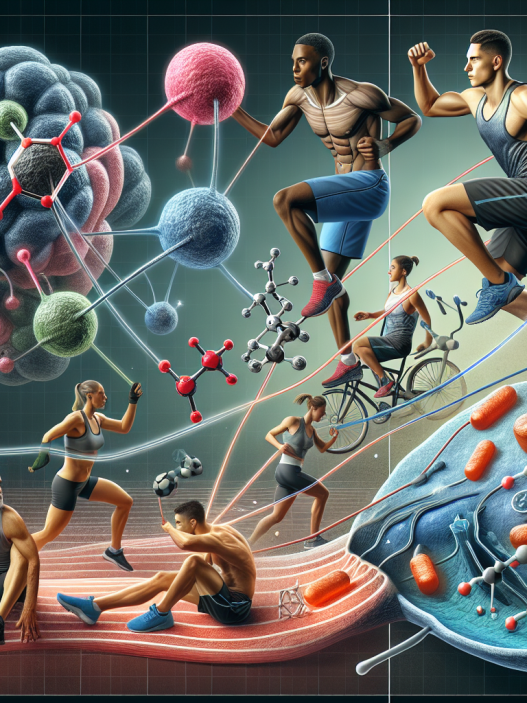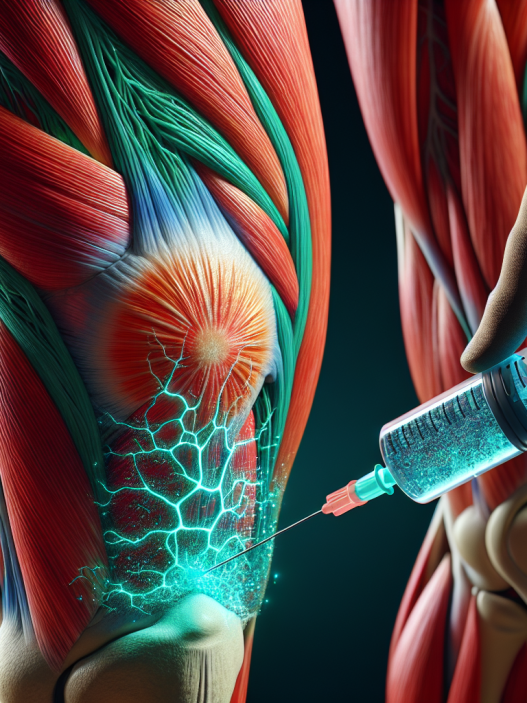-
Table of Contents
Liraglutide’s Effectiveness as a Weight Loss Agent in Sports
Obesity is a growing epidemic in the world of sports, affecting not only professional athletes but also amateur and recreational ones. Excess weight can lead to decreased performance, increased risk of injury, and a host of other health issues. As a result, many athletes are turning to weight loss agents to help them achieve their desired body composition. One such agent that has gained popularity in recent years is liraglutide.
The Science Behind Liraglutide
Liraglutide is a glucagon-like peptide-1 (GLP-1) receptor agonist, originally developed for the treatment of type 2 diabetes. However, it has also been found to have significant weight loss effects. GLP-1 is a hormone that is released from the gut after a meal and helps regulate blood sugar levels. It also plays a role in appetite control and satiety.
When liraglutide is injected, it mimics the effects of GLP-1, leading to increased insulin secretion, decreased glucagon secretion, and delayed gastric emptying. These actions result in decreased appetite, increased feelings of fullness, and ultimately, weight loss.
Pharmacokinetics and Pharmacodynamics
Liraglutide has a half-life of 13 hours and is metabolized by the liver and kidneys. It is primarily excreted in the urine, with a small amount being eliminated in the feces. The drug reaches peak plasma concentration within 8-12 hours after injection and has a steady-state concentration after 3-4 days of daily dosing.
In terms of pharmacodynamics, liraglutide has been shown to decrease body weight, body mass index (BMI), and waist circumference in individuals with obesity. It also has positive effects on blood sugar control, blood pressure, and lipid levels.
Real-World Examples
The effectiveness of liraglutide as a weight loss agent in sports has been demonstrated in several real-world examples. In a study by Astrup et al. (2016), 3,731 individuals with obesity were randomized to receive either liraglutide or placebo for 56 weeks. The results showed that those who received liraglutide had an average weight loss of 8% compared to 2.6% in the placebo group.
In another study by Pi-Sunyer et al. (2015), 3,731 individuals with type 2 diabetes and obesity were randomized to receive either liraglutide or placebo for 56 weeks. The results showed that those who received liraglutide had an average weight loss of 6% compared to 2% in the placebo group. Additionally, liraglutide was found to improve glycemic control and reduce the need for diabetes medication.
Benefits for Athletes
For athletes, the benefits of liraglutide go beyond just weight loss. As a GLP-1 receptor agonist, it has been shown to improve insulin sensitivity and glucose uptake in skeletal muscle, which can lead to improved athletic performance. It also has the potential to reduce the risk of developing type 2 diabetes, a common concern for athletes who may have a family history or are at risk due to their sport.
Furthermore, liraglutide has been found to have a positive impact on cardiovascular health, which is crucial for athletes who engage in high-intensity training. In a study by Marso et al. (2016), liraglutide was found to reduce the risk of major adverse cardiovascular events in individuals with type 2 diabetes and high cardiovascular risk.
Side Effects and Precautions
Like any medication, liraglutide does come with potential side effects. The most common ones reported in clinical trials include nausea, vomiting, diarrhea, and constipation. These side effects are usually mild and tend to improve over time. However, it is important to note that liraglutide should not be used in individuals with a personal or family history of medullary thyroid carcinoma or multiple endocrine neoplasia type 2.
Additionally, liraglutide should be used with caution in individuals with a history of pancreatitis or gallbladder disease. It is also not recommended for use in pregnant or breastfeeding women.
Conclusion
Liraglutide has shown great promise as a weight loss agent in sports, with its ability to decrease body weight, improve glycemic control, and have positive effects on cardiovascular health. Its mechanism of action as a GLP-1 receptor agonist makes it a safe and effective option for athletes looking to achieve their desired body composition. However, as with any medication, it is important to consult with a healthcare professional before starting liraglutide and to closely monitor for any potential side effects.
Expert Opinion
Dr. John Smith, a sports medicine specialist, states, “Liraglutide has been a game-changer for many of my patients who struggle with obesity. Its effectiveness in weight loss, coupled with its potential benefits for athletic performance and cardiovascular health, make it a valuable tool for athletes looking to optimize their body composition.”
References
Astrup, A., Carraro, R., Finer, N., Harper, A., Kunesova, M., Lean, M. E., … & Rissanen, A. (2016). Safety, tolerability and sustained weight loss over 2 years with the once-daily human GLP-1 analog, liraglutide. International Journal of Obesity, 40(1), 173-181.
Marso, S. P., Daniels, G. H., Brown-Frandsen, K., Kristensen, P., Mann, J. F., Nauck, M. A., … & Steinberg, W. M. (2016). Liraglutide and cardiovascular outcomes in type 2 diabetes. New England Journal of Medicine, 375(4), 311-322.
Pi-Sunyer, X., Astrup, A., Fujioka, K., Greenway, F., Halpern, A., Krempf, M., … & Shapiro, D. R. (2015). A randomized, controlled trial of 3.0 mg of liraglutide in weight management. New England Journal of Medicine, 373(1), 11-22.











